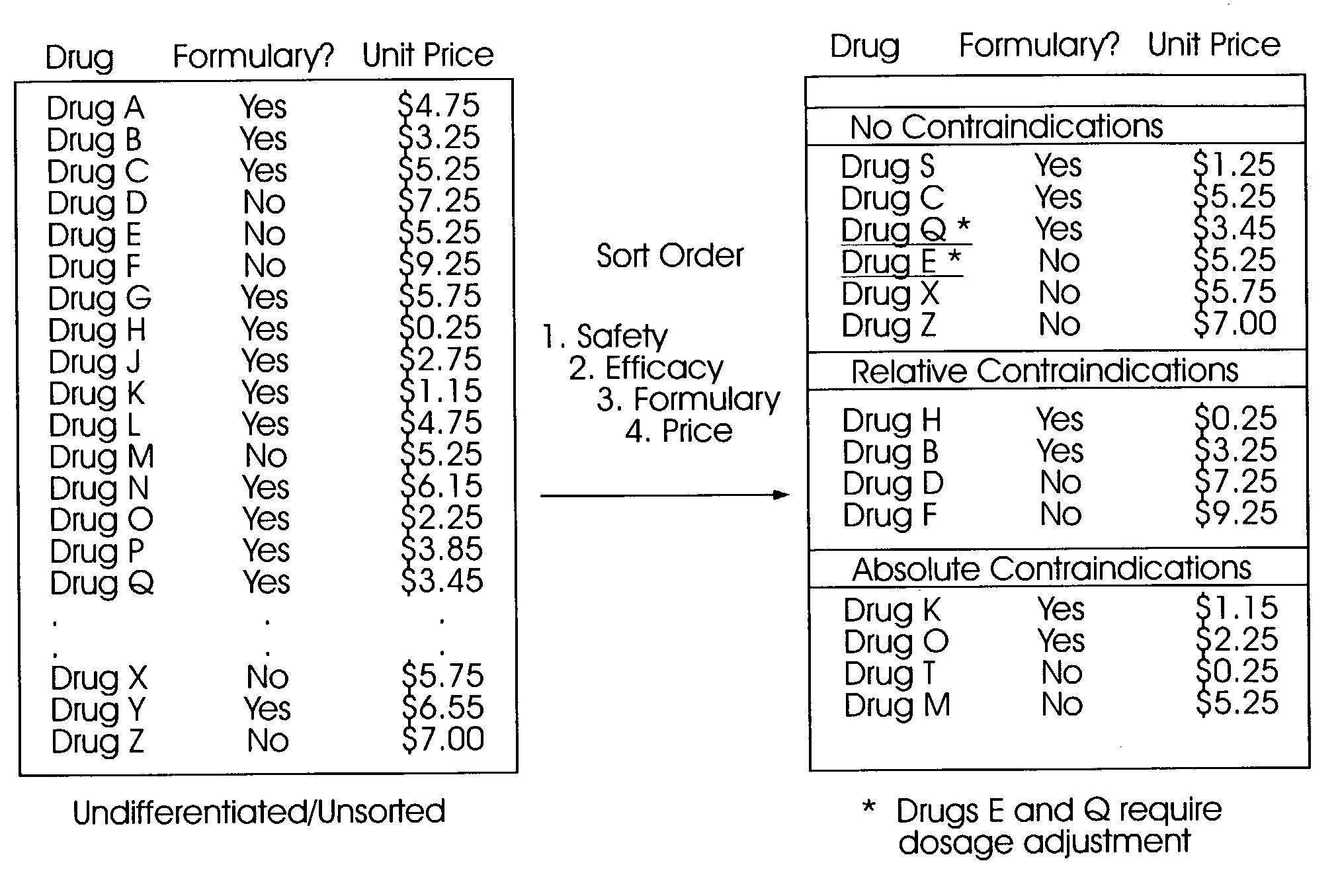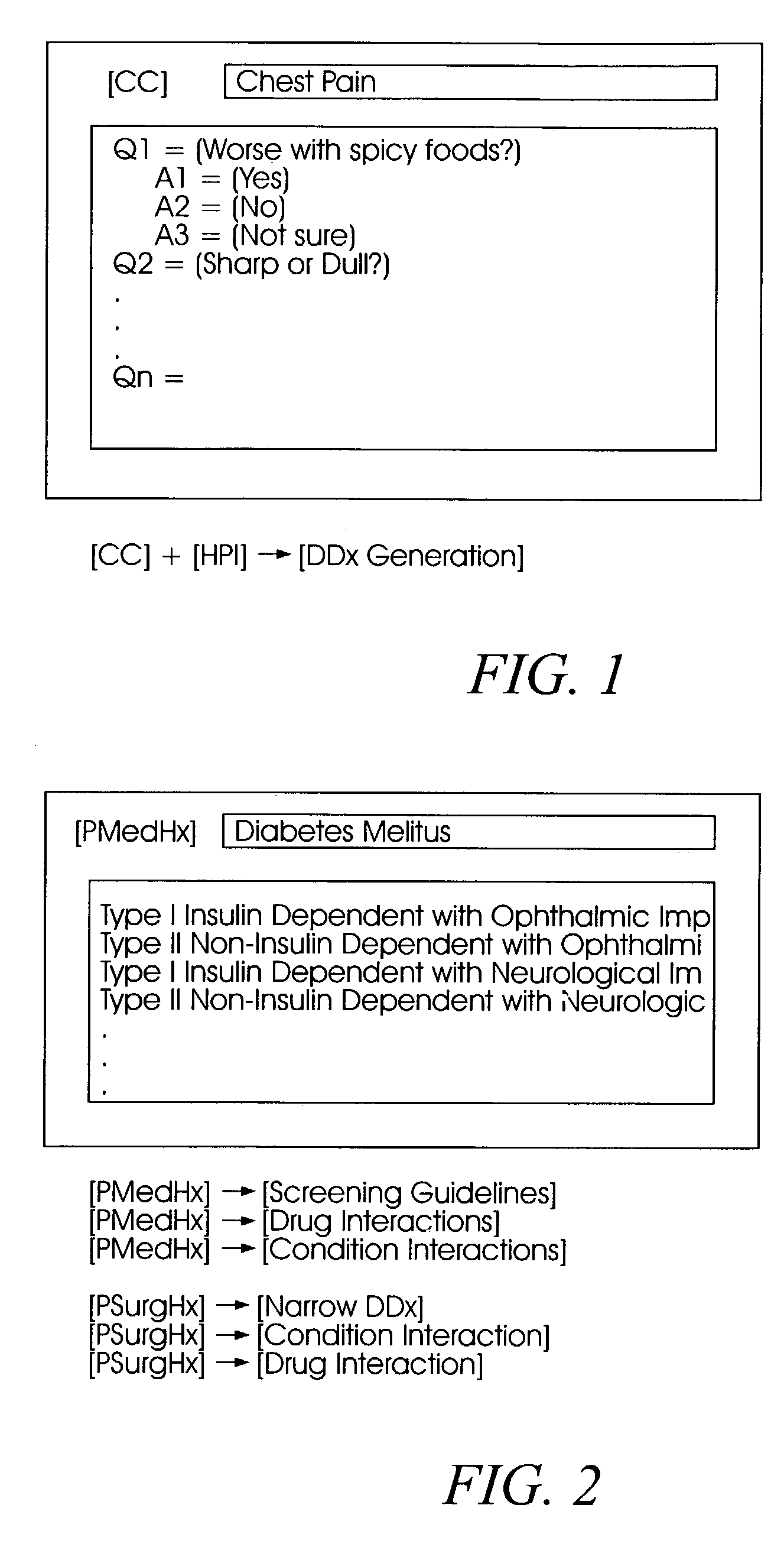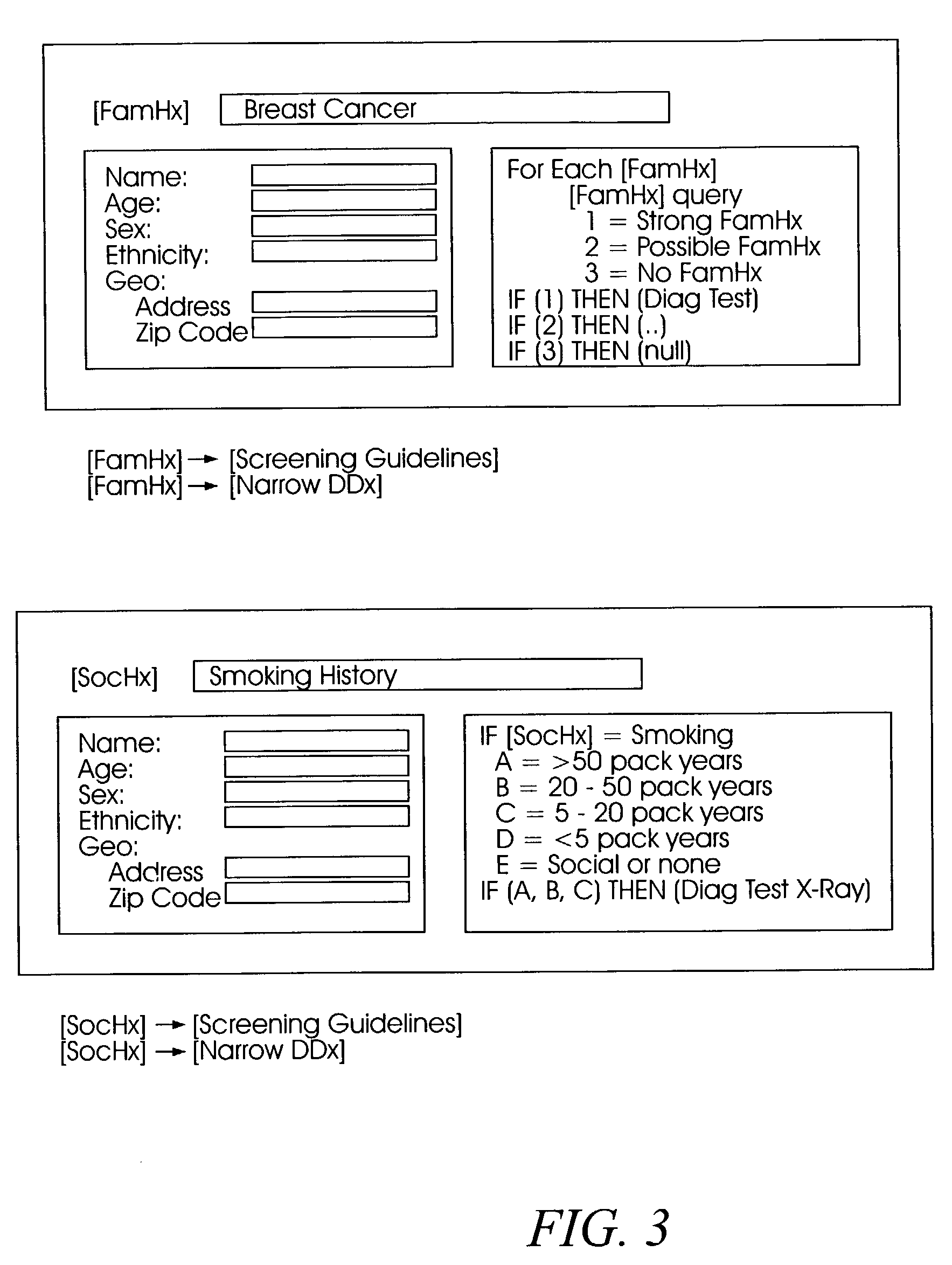System and method for patient-specific optimization of medical therapy by simultaneous symbolic reasoning in all clinical dimensions
a system and method technology, applied in the field of system and method for electronic medical therapy determination, can solve the problems of increasing complexity and challenging task of modern healthcare professionals, lethal or irreversible negative consequences for patient health or recovery prognosis, and physicians becoming overwhelmed with information
- Summary
- Abstract
- Description
- Claims
- Application Information
AI Technical Summary
Benefits of technology
Problems solved by technology
Method used
Image
Examples
Embodiment Construction
[0020]The present invention relates to a system and methodology by which patient-specific, clinically-optimized drug therapy regimen may be determined using a computer by taking all of the clinical dimensions relating to that patient into account when developing a drug therapy regimen. Clinical dimensions are defined by vectorized indices and therapy is optimized by performing simultaneous symbolic reasoning across all clinical dimension vectors. In terms of a clinical reality, a physician evaluates a finite, well-defined set of input variables, the arguments of which are determined during a patient interview and history analysis, in order to inform the system with regard to that particular patient. In accordance with the present invention, these input variables are associated to the clinical dimensions which optimize a particular drug or medical therapy regimen in accordance with “rules” developed from a universal body of medical knowledge. Necessarily, the clinical dimension vecto...
PUM
 Login to View More
Login to View More Abstract
Description
Claims
Application Information
 Login to View More
Login to View More - R&D
- Intellectual Property
- Life Sciences
- Materials
- Tech Scout
- Unparalleled Data Quality
- Higher Quality Content
- 60% Fewer Hallucinations
Browse by: Latest US Patents, China's latest patents, Technical Efficacy Thesaurus, Application Domain, Technology Topic, Popular Technical Reports.
© 2025 PatSnap. All rights reserved.Legal|Privacy policy|Modern Slavery Act Transparency Statement|Sitemap|About US| Contact US: help@patsnap.com



